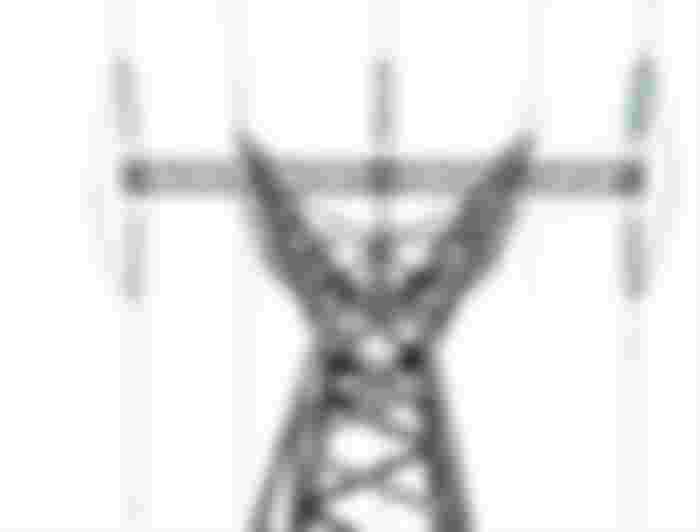Crypto and Batteries
The purpose of this section is to delve deeper into the battery concept, explain why batteries are essential for human progress and why current batteries are still inefficient. A direct consequence of this is the delay of a significant increase in captured energy, or in other words, the delay of human progress.

2.1. What is a battery?
“A battery, by definition, is a bunch of cells. And the cell is a little can of chemicals. The challenge is to take a high-energy cell, and a large number of them, and safely combine them into one big battery.”
Elon Musk
According to Wikipedia: “A battery is a device or device that transforms the energy developed in a chemical reaction into electrical current. Each cell in a battery contains a positive terminal (cathode) and a negative terminal (anode). The chemical process of exchanging electrons is known as oxidation.”
This is the strict and literal way of defining a battery, focused on describing the chemical process and the components that make up a battery. Essentially, a battery is a device that converts chemical energy directly into electrical energy. It's this process that generates power for your cell phone and helps your car start every day.
What is a battery for?
In a broader and more abstract way, we can think of a battery as a container that allows you to store and transport energy in time and space. That is, in the broadest sense, a battery is a portable energy reservoir that allows us to carry energy from one place to another and through time without major losses.
In this broader point of view, which will be used in the following article, any form of energy storage that allows the spatial displacement of this energy in small mobile units can be considered a battery. This means, for example, that the gas present in the lighter is also a battery that stores energy in the form of butane, carried in the pocket and used by combustion on demand. In practice, humanity has created a mini-power plant to generate thermal energy via butane combustion. Plants and trees are also power plants, with fruits, fruits and grains being solar batteries that humanity has been using for thousands of years. That is, photosynthesis converts solar energy into plant growth, which can be sold in the future as food and firewood.
summary: this text uses the term battery in the broad sense and not in the narrow sense and defines that a battery is “a portable energy reservoir that allows us to carry energy from one place to another, or through time, without great losses”. In this sense, gasoline is a battery, aluminum is a battery, the water stored in a dam that will be converted into electricity is a battery, the cow that converts organic matter into protein and fat is a battery, and the fruit that converts solar energy into fructose too.
2.2. Why is it important to be able to store energy?
“I ride my bike for transport a lot — occasionally I ride it for fun. But I also have a bike connected to a generator that is hooked up to my solar battery, so if I ride 15 minutes hard on my bike, that's enough power for toast or charging my computer.”
Ed Begley, Jr.
This section directly relates to the “wasted energy” section in the first part of the text. Basically, it is important to be able to store in mobile reservoirs because transporting electricity is expensive. Implementing transmission lines is expensive and time consuming. A completed energy project can be disconnected from the grid for months or even years, effectively failing to sell its product (electricity), as the construction of these transmission lines does not depend on the entrepreneur but on the State.
Let's reflect for a moment on the most radical example on the topic: why is the Sahara desert not currently partially covered in solar panels? This is the example chosen, as we are not just looking to supply all the current energy demand needed in the region on the edges of the Sahara, but to capture as much energy as possible, given the relationship “amount of energy captured X advancement of civilization stage” demonstrated in section 1 of this text. In this sense, covering a region the size of New Mexico with solar panels would already generate the same amount of energy that humanity uses in a year.
Image that shows the space of the Sahara that would have to be covered in solar panels to supply the world, the European Union and Germany.
First reason: there are no nearby consumer markets that would justify this undertaking. Europe is relatively close, but Spain already has a high potential for generating solar energy. African countries in the region would not be able to absorb all this energy either.
Second reason: even if there were large consumer markets on the edges of the Sahara, it would still be necessary to implement the entire transmission infrastructure of this generated solar energy. In other words, it would not only be necessary to install millions of solar panels, but also to build transmission lines, resulting in a significantly higher cost.
Third reason: the transmission of electrical energy is also a process that fights the laws of physics, and therefore it is inherently ineffective. In other words, the transmission of energy via electrical wiring collides with the Joule Effect, a law of physics that expresses the relationship between the electric current flowing through a conductor and the heat generated. The positive side of this law of physics is that when electric current flows through a conductor, it causes a rise in temperature in the conductor. This effect is used in heaters, ovens, stoves, lighting, irons, etc. The downside is that this heat represents a loss of energy.
The Joule Effect says that the electrical energy that transforms into heat in a conductor is directly proportional to the electrical resistance and the square of the current intensity and the passage time of this current. The electrical resistance of a conductor is basically the multiplication of the resistance of the cable material times the distance, which explains why it is impossible to transmit electrical energy without considerable losses along the way: the laws of physics do not
allow Transmission lines are generally the responsibility of the State, and tend to take time to be extended to a certain region. Delays are common and can make a power generation venture economically unfeasible. Or, in other words, in the entrepreneur's view, it is not enough for his plant to be connected to the transmission lines in the future if the debt contracted to structure the venture makes the company go bankrupt before then. Feasibility calculations always consider a certain time for the venture to start making a profit, if this does not occur, the entire financial feasibility worksheet loses validity. That is, it is more difficult to model a venture if one of the variables does not depend on you.
OK, but the Sahara desert is far from everything. It's in Brazil?
Currently, Brazil is building the largest solar energy complex in Latin America, with the implementation of 14 solar generation plants in the north of Minas Gerais, a region with a lot of solar incidence. The north of Minas and the states of the Northeast are regions with strong potential for wind power generation. This is only possible because Brazil already has transmission lines that cross Brazil from north to south.
But even though Brazil already has transmission lines, we still have a lot of wasted solar potential. This can be seen in the map below, where the white dots are solar power generation plants. The northeast region even has two solar plants, but the truth is that the use is far below the potential of the region, which could easily house 10x or even 100x more plants and take advantage of its solar incidence. Today, most solar projects are in the Midwest and Southeast, which are tropical and non-equatorial regions, and have a lower incidence of solar radiation.

It is also worth noting the myriad of small green dots that represent wind farms and how they exist always following the transmission lines. Is it just where there is a transmission line that there is wind or are we wasting all the wind that exists in other locations?
The battery issue, or “the Dilma reason”
Another less talked about reason why green energy projects do not take off is that it is not possible to store the energy generated in batteries while the transmission lines do not reach the location of the solar and wind power plants. . In other words, it is not possible to store the photons of solar energy (nor the wind, as a great contemporary Brazilian thinker has already informed us). In other words, this energy is wasted at a time when the entrepreneur has probably already invested hundreds of millions of reais in the construction of the plant and has no way of balancing the accounts before being able to sell this energy. This energy can already be captured, but due to lack of transport it is wasted instead of being used. A solution to these issues would be to be able to store this energy so that it would not be wasted and would have use since the beginning of the enterprise. Even more so if there is a battery that can teleport this energy to other places (as we will see in the 3rd section).
But, why is it not possible to store this solar or wind energy in batteries? In other words, why is it not possible to store wind?
In summary: Basically, it is important for renewable energy ventures to be able to store the captured energy. This would mean that, at the beginning of the project's life, it would not need to depend on the existence of transmission lines for the connection with the electricity grid. When it is possible to store the captured energy, a new plant will generate revenue as soon as it is ready. Being able to store the captured energy will allow the implementation of projects that will be able to capture abundant energy that is far from the consumer market. At the end of the day, it is indeed important to be able to store (the energy generated by) the wind.
2.3. Electric Batteries
I took my iPod to the Apple Store here in Manhattan and asked them to replace the battery. And they explained to me that Apple doesn't offer a service to replace the battery in the iPod, and my best bet was to buy a new iPod.
Casey Neistat
Electric batteries are batteries in the strict sense that we are used to dealing with.
They are divided into two categories and can be primary (only used once) or refillable.
Primary batteries are the most common for portable equipment that consumes little power and is used intermittently, such as in alarms and TV controls. These primary batteries cannot be recharged, as the chemical reactions present in them are not easily reversible and the materials do not return to their original shape.
Rechargeable batteries need to be charged before first use as they are usually constructed of materials in a discharged state. These batteries are rechargeable because the electric current can reverse chemical reactions. The oldest rechargeable battery is the lead-acid battery, which is widely used in cars and boats.
Other widely used rechargeable batteries are those that power cell phones and computers, such as nickel-cadmium (NiCd), nickel-zinc (NiZN) and lithium-ion (Li-ion) batteries.
Batteries have a performance that decays over time, since chemical reactions are not 100% reversed. This means that at the end of its life, a battery is no longer rechargeable.
Thinking about the electricity grid as a whole, batteries could even be used to store energy at industrial levels when the grid has excess energy available and sell energy to the grid when there is a shortage. There are already electric batteries that are being used for storage of surplus energy from the electrical grid at the industrial level and at grid scale. Grid-scale energy storage envisages the large-scale use of batteries to collect and store energy from the grid or a power plant and then discharge that energy to provide electricity or other grid services when needed. Grid-scale energy storage will be an increasingly important component of smart power supply networks, helping to balance them.
2.3.1. Nickel-Cadmium (NiCd)
Batteries NiCd batteries are of the rechargeable type and are used in cell phones. This type of battery is considered old, and is currently being replaced by lithium-ion batteries.
The NiCd battery was originally conceived in 1899, that is, it is an old technology, and its incorrect disposal represents an environmental risk, since cadmium is a very toxic heavy metal. NiCd batteries are cheaper, but have a shorter lifespan, less charge capacity and are addictive (they suffer from the so-called “memory effect”).
2.3.2. Lithium (Li-ion)
Batteries Lithium batteries store up to three times more energy than a NiCd battery. Another advantage of lithium batteries is that they are not addictive (ie they have no memory effect).
The first lithium batteries became commercially available only after 1970
Two examples of the use of lithium batteries in the current electricity grid.
Hornsdela Powe Reserve, is the largest lithium battery energy storage plant with a capacity of 100MW and has been in operation in Australia since December 2017. This energy storage plant provides two distinct services: I) energy arbitrage and II ) contingency reserve, in case of failures in the Australian power grid.
Another example of an energy storage plant is the Mountain Power project in Vermont, which also uses lithium batteries. Significantly smaller (4MW), this project was inaugurated in 2015 and also includes the installation of solar panels capable of generating 2MW of energy. The facility has two functions: 1) backup power and micro-grid capabilities; and 2) demand charge reductions. The system that combines solar energy with storage allows the utility to create a micro-grid, which supplies power to a critical facility even when the rest of the grid is down.
What we can take from these examples, in the author's opinion, is that batteries are not yet viable options for use in the energy grid on a large scale, otherwise they would already be more widespread. It is true that this is changing, and the period between 2012 and 2020 saw an 82% reduction in the cost of a lithium battery. If this trend continues, the use of these batteries is likely to increase considerably.
Considering the need to expand the manufacture of lithium batteries, Tesla has been building the “Gigafactories”. As the name says, Gigafactories are gigantic factories that aim to exponentially increase the production of lithium batteries, which are one of the main bottlenecks for the scale commercialization of Tesla's electric cars. There are currently four Gigafactories in operation (three in the United States and one in China) and two more under construction (in Berlin and Texas). Estimates show that more than 100 Gigafactories would be needed to supply the world's demand for electricity.
A major bottleneck found for the expansion of lithium battery production is that this element is scarce in nature. This means that it is not possible to significantly increase the production of this element with current technologies. Lithium is found in some rock types at low compositions and is also found more concentrated in the Andean highlands (Bolivia, Chile and Argentina, which together have ~75% of the world's lithium reserves). Australia is also a major world producer of lithium, although its reserves are not as abundant as the Andean countries. Mining the rocks is inefficient and mining the salt flats is simple and has been carried out in Chile (the world's largest producer of lithium) and Argentina. In Bolivia, on the other hand, the exploitation of salt flats has not started in any significant way. For those who like “conspiracy theories”, it is not difficult to connect the dots and see the relationship between Bolivia not wanting to exploit its lithium reserves with the help of American companies and the coup that took place in the country a few years ago.
Largest lithium reserves in the world. In green are the reserves that can be found in brines associated with salt flats, in brown are the reserves associated with rocks known as pegmatites and in gray the reserves associated with clays.
The original tweet was deleted, but the internet never forgets. Musk's fan club may even argue that it was just a joke, but as the popular wisdom says "every joke has a basis of truth" and one of the bottlenecks of Tesla's production is in fact lithium batteries. Not to mention that any South American with minimal historical knowledge knows that the US interfering in the region is nothing out of the ordinary.
The reality is that if new technologies for obtaining and enriching lithium or batteries based on some other element are not invented, the scalability of electric batteries must be questioned. The image below shows the evolution of electric batteries as a function of their volumetric density (the amount of energy that fits in a unit of volume) and their gravimetric density (the amount of energy that fits in a unit of mass) and shows that the Lithium-ion battery packs have the best relationship between battery size and weight, showing that, as a whole, electric batteries aren't quite there yet. They are already important in specific niches, but they are not yet part of the basis of society like the electricity grid. If the batteries had already “arrived there”, wires would not be needed.
2.3.3. The unfulfilled promise of electric batteries and, consequently, of green energies
Finally, it can be said that electric batteries (batteries in the strict sense) cannot store all the surplus electric energy that man captures (and could capture), and that this is, at least, one of the reasons why humanity has not yet reached a situation of energetic abundance. If or when batteries manage to store electrical energy in an economically viable way on a large scale, the consequence is likely to be an energy revolution like the dominance of fire and fossil fuels. This revolution will allow humans to increase the amount of energy captured by an order of magnitude, generating positive second-order effects that are still unimaginable.
When the batteries store a significant part of the energy captured, solar plants can be installed throughout the Sahara desert, throughout the Brazilian northeast, throughout the Middle East and other deserts in the world. The same is true for hydro, wind and geothermal energy: when it is possible to store the energy captured in wild places (such as waterfalls in uninhabited regions, for example) and it is cheap to transport this stored energy, green energies will finally flourish.
To better understand the “batteries and energy” context, I talked to a mechanical engineer with a PhD from ITA and who works with renewable energies. Supposedly, batteries will only be needed if someday a good percentage of the energy mix will be made up of solar and wind energy. But the question that remains is the old question of which came first, the chicken or the egg? (An addendum: the answer is the egg, because reptiles already laid eggs before the emergence of birds). Will batteries really only be needed when the energy matrix changes or will the energy matrix not change precisely because of the lack of batteries?
If really efficient batteries existed, we could build solar, geothermal, wind and hydroelectric power plants in remote places without worrying about connecting these places to the consumer market. Effectively, this would mean that as soon as the plants were ready, they would already be generating value for the entrepreneur. This helps to make these projects viable from an economic point of view, since currently the plant only begins to generate value for the entrepreneur when it is connected to the state's energy grid. That is, for an indefinite time, the entrepreneur needs to model the economic viability of his enterprise without being able to sell the energy he could be capturing. In other words, they cheapen energy production enormously and this makes it an interesting market for many entrepreneurs. So in the case of who needs to come first between the batteries and the generation of these energies, for me, it is clear that it is the lack of battery that reduces the economic viability and undermines the potential that these “green” energies have to gain scale.
In summary: Electric batteries allow several amenities of modern life, such as cell phones and remote controls. However, the reality is that batteries as a technology have not yet realized their full potential. This is evidenced by the fact that it is not possible to enable renewable energy projects such as solar, hydrothermal or wind energy and store the energy to later transport it via battery to the consumer market. This is still more of a dream than a reality.
2.4. The Gasoline Battery
“Coal, oil and gasoline are called fossil fuels because they are mostly made from the fossil remains of living things for a long time. The chemical energy within them is a kind of stored sunlight originally accumulated by ancient plants. Our civilization runs, burning the remains of humble creatures that inhabited the planet hundreds of millions of years before the first humans came on the scene. Like some horrible cannibal cult, we subsist on the corpses of our ancestors and distant relatives.”
Carl Sagan
If a battery is a “portable reservoir of energy”, then it wasn't just electric batteries that changed the world.
To illustrate this, and explain the importance of the gasoline battery in the construction of the modern world, an interesting approach is to understand the history of automobiles in the early 20th century (1900s)
2.4.1. Horseless Carriage
Electric cars may look like futuristic vehicles, but in reality they are symbols of the past. At the turn of the 19th century (1800s) to the 20th century (1900s), the horse was still mankind's main means of transport. A major problem with this means of transport is that all the streets were filled with horse poop, in addition to the need for food and stables. Technological advances tried to solve these problems and automobiles were invented with three different types of engines: steam, gasoline or electric.

Steam was a tried and true source of energy, and it was reliable to power factories and trains. Some of the first self-propelled vehicles in the late 1700s relied on steam; however, it took until the 1870s for this technology to be used in automobiles. That's because steam wasn't very practical for personal vehicles. Steam vehicles required long start-up times—sometimes up to 45 minutes in the cold—and needed to be recharged with water, limiting their range.
Electric cars appeared at the same time as gasoline cars and seemed to have advantages over the latter. Although gasoline cars were promising, they had some problems that prevented their adoption. They required a lot of manual effort to drive — shifting gears was no easy task and they had to be started with a crank (the starter had not yet been invented), making them difficult to operate. They were also noisy and their exhaust gave off unpleasant fumes. Unlike internal combustion engines, electric vehicles were easy to start, accelerate, brake, had no exhaust and had nothing exploding under the seat. As a result of this ease of use, electric cars seemed like big business in the early 1900s.
For the wealthy elites of Paris and their New York counterparts, the horseless carriage was mandatory, and electric motors were the best choice. In 1900, there were 4,192 vehicles on the road in the US, 1,681 of which were steam cars; 1,575 from electric cars and 936 from cars with internal combustion engines. If you just wanted to get around town, the electric car was a better option—that is, if you were rich enough to pay for one.
Electric cars had none of the problems associated with steam or gasoline. They were quiet, easy to drive and didn't emit a stinky pollutant like other cars at the time. Electric cars quickly became popular with urban residents — especially women. They were perfect for short city trips (range was limited by lead-acid battery technology), and poor road conditions outside cities meant few cars of any kind could venture further. This means that the question of the autonomy of these vehicles was not important.
As more people gained access to electricity in the 1910s,
electric automobiles became easier to recharge, increasing their popularity in all walks of life.
Just like today, one of the challenges for early electric vehicle owners was where to charge them. By 1910 homeowners could install their own charging stations on their property, and an increasing number of auto repair shops were opening up, allowing electric cars to charge overnight.
Electric car production peaked in 1912. Fritchle, one of the largest electric car manufacturers at the time, for example, built about 198 vehicles a year between 1909 and 1914. Fritchle's cars were famous for their long range, which was used in advertisements to sell more, illustrating how autonomy has always been an important issue.
But even with the success of Fritchle's automobiles, while at the turn of the century electric cars constituted a good proportion of the market, advances in gasoline engine vehicles meant a dwindling market share for electric cars as time went on. .
2.4.2. What made gasoline cars win?
The simple answer is: the Model T, its more competitive price, and the longer range that gasoline engine cars had compared to electric cars.
Henry Ford introduced the mass-produced, gasoline-powered Model T in 1908. In 1912, a gasoline car cost anywhere from $650 to $850 (depending on the source), while the average electric car sold for $1,750. The Model T is a milestone in world history and symbolizes the transition from handcrafted car construction to an assembly line process. Its project was made considering the ease and practicality for the manufacturing process on the assembly line. Before, each worker was responsible for all stages of the production process, with the changes made by Ford, the workers became specialized and became responsible for different stages. Ford created a track system, which moved the production car through the factory, passing each employee's workstation. This process significantly increased productivity and, as a result, the unit cost of a Model T became lower than that of its competitors. Initially, in 1912, Model Ts cost $850, and by 1927, the last year of their manufacture, the price had dropped to $290.
Its engine was a 2.9-liter four-cylinder, which generated 20hp of power. With that, its top speed was somewhere between 65 to 85 km/h (depending on the source). By today's standards it seems little, but for the average citizen of the 1910s it effectively meant stepping out of the "horse speed" era. Until the line application of the assembly line on the Model T, on average humanity was restricted to the mobility of a horse, which can reach speeds between 48–64 km/h, but cannot maintain this speed for a long time.

In 1912, the first electric starter was invented, eliminating the need for a crank to start a car. This invention made the gasoline-powered automobile even more attractive to drivers who still preferred electric cars. The discovery of Texas crude also lowered the price of gasoline, making gasoline car ownership and maintenance more affordable for the average consumer.
In the 1920s, the US already had a better road system connecting cities. With the discovery of Texas crude oil, gasoline became cheap and available to rural Americans. Fuel stations sprang up across the country in this period. By comparison, few Americans outside the cities had access to electricity at that time. Isso, somado com a falta de autonomia e infraestrutura para o abastecimento na zona rural, fez as pessoas adotarem os veículos a gasolina e não a eletricidade. No meio da década de 1930s os veículos elétricos já haviam praticamente desaparecidos.
Electric cars may look like futuristic vehicles, but in reality they are symbols of the past. At the turn of the 19th century (1800s) to the 20th century (1900s), the horse was still mankind's main means of transport. A major problem with this means of transport is that all the streets were filled with horse poop, in addition to the need for food and stables. Technological advances tried to solve these problems and automobiles were invented with three different types of engines: steam, gasoline or electric.
Steam was a tried and true source of energy, and it was reliable to power factories and trains. Some of the first self-propelled vehicles in the late 1700s relied on steam; however, it took until the 1870s for this technology to be used in automobiles. That's because steam wasn't very practical for personal vehicles. Steam vehicles required long start-up times—sometimes up to 45 minutes in the cold—and needed to be recharged with water, limiting their range.
Electric cars appeared at the same time as gasoline cars and seemed to have advantages over the latter. Although gasoline cars were promising, they had some problems that prevented their adoption. They required a lot of manual effort to drive — shifting gears was no easy task and they had to be started with a crank (the starter had not yet been invented), making them difficult to operate. They were also noisy and their exhaust gave off unpleasant fumes. Unlike internal combustion engines, electric vehicles were easy to start, accelerate, brake, there was no exhaust, and there was nothing exploding under the seat. As a result of this ease of use, electric cars seemed like big business in the early 1900s.
For the wealthy elites of Paris and their New York counterparts, the horseless carriage was mandatory, and electric motors were the best choice. In 1900, there were 4,192 vehicles on the road in the US, 1,681 of which were steam cars; 1,575 from electric cars and 936 from cars with internal combustion engines. If you just wanted to get around town, the electric car was a better option—that is, if you were rich enough to pay for one.
Electric cars had none of the problems associated with steam or gasoline. They were quiet, easy to drive and didn't emit a stinky pollutant like other cars at the time. Electric cars quickly became popular with urban residents — especially women. They were perfect for short city trips (range was limited by lead-acid battery technology), and poor road conditions outside cities meant few cars of any kind could venture further. This means that the question of the autonomy of these vehicles was not important.
As more people gained access to electricity in the 1910s, it became more
easy to recharge electric cars, increasing their popularity in all walks of life.
Just like today, one of the challenges for early electric vehicle owners was where to charge them. By 1910 homeowners could install their own charging stations on their property, and an increasing number of auto repair shops were opening up, allowing electric cars to charge overnight.
Electric car production peaked in 1912. Fritchle, one of the largest electric car manufacturers at the time, for example, built about 198 vehicles a year between 1909 and 1914. Fritchle's cars were famous for their long range, which was used in advertisements to sell more, illustrating how autonomy has always been an important issue.
Part 2 Soon ...



